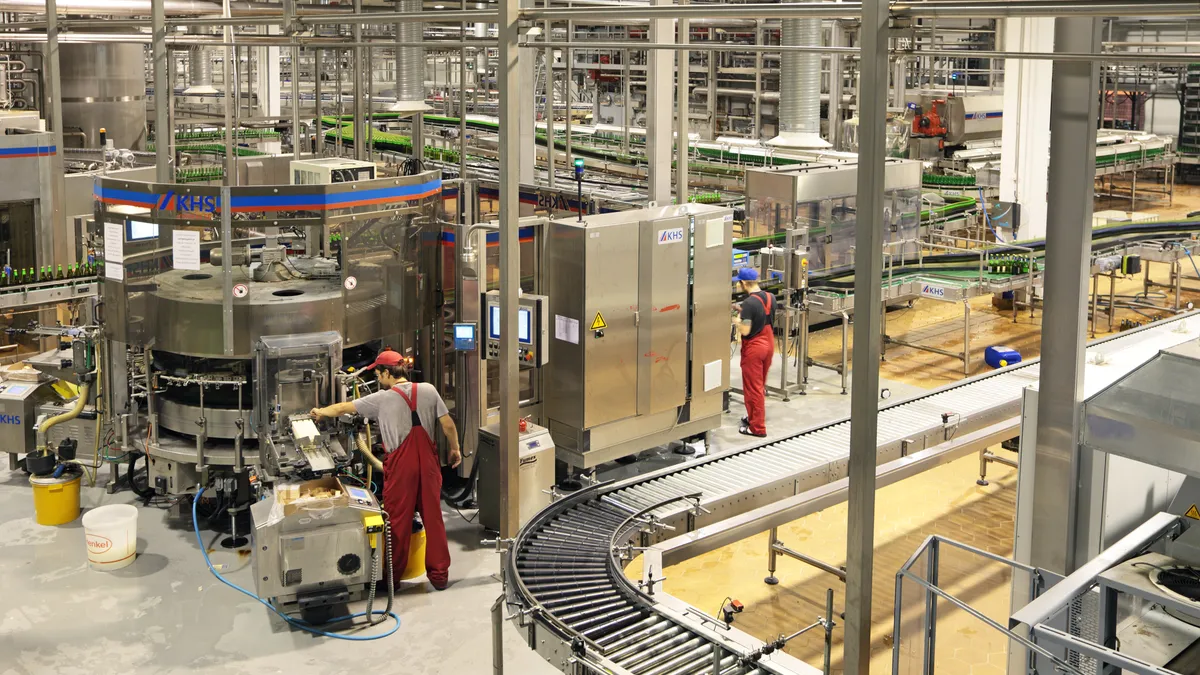This is an op-ed written by Richard Lebovitz, CEO of LeanDNA
A dangerous predicament has formed in procurement operations. Outlined by The Hackett Group earlier this year, procurement budgets are shrinking while revenue continues to grow. This creates a challenging gap to fill between increased productivity pressures on executives, site managers and buyers in factories, and lower investment in the tools, technologies and resources those individuals can use to achieve business growth.
The growing disparity between advancing technology and advancing demands will likely lead to efficiency declines and halt innovation in the future.
This is no surprise. In the last 25 years, I’ve watched that gap widen. Factories and facilities are spread out across the globe, customer demands for delivery and customization continue to rise and the mountain of data towering over the stifled technology adoption in manufacturing grows ever steeper.
Experts advise focusing on improving analytics and agility in procurement operations, and I couldn’t agree more. But while these analytics and operations improvements have helped to organize data, they haven't done much for the people who buy, sell and manage inventory in the factory every day. The fact is, they are still using a Civil War-era cannon to fight a 21st century war — slow, cumbersome actions with limited range and focus and scattered impact.
Here are three actions manufacturers can take to equip factory teams with advanced, yet cost-effective, tools for the fight against procurement inefficiencies today:
1. Automate routine data analysis to free up time for more strategic work.
Over the last 25 years, I’ve watched artificial intelligence take its place in the supply chain space. It started, as with most industries, as the collection and visualization of the massive amount of data in the world. Today, AI has evolved to enable automation of data and root cause analyses.
There is just too much information in too many places for buyers and executives to analyze on their own. To set them up for success, they need technology that does a bit of the legwork for them. We’ve worked with clients whose buyers spent 10 to 15 hours per week on analyses and spreadsheet creation alone. With that time back in their days, buyers can uncover anomalies in data, focus on purchase orders and adjusting mid-max levels, improve relationships with suppliers, and finally make it home in time for dinner.
2. Leverage AI tools to help buyers prioritize their work days.
For buyers in a factory, the daily workflow can look a lot like a "Choose Your Own Adventure" game. When presented with an overwhelming amount of information — often information only about what is performing poorly — buyers must decide where to start and hope it takes them to the right place. And that’s after they spend hours analyzing the data if their tools don’t do it for them.
It’s not unlike being dropped into the middle of a championship chess match blindfolded with only five moves left to win … Not quite set up for success, just like buyers in today’s factories.
The current generation of AI technology has since stepped in to create a world where procurement actions can be prioritized and presented by impact. For example, action items delivered to buyers each morning can be prioritized by projected cost savings. The same client we saw save hours a week in reporting time also benefited from this tactic: It gamified their buyers’ days, incentivizing employees to complete actions with more business impact first to produce higher savings than their peers. The addition of value-based prioritization into the buyers’ workflows yielded a major cost benefit while introducing an unexpected element of fun. With a renewed focus on inventory optimization, the organization experienced a 36 percent inventory reduction in just three months.
3. Facilitate collaboration across your supply chain organization.
At the end of the day, manufacturing is still a people-centric business: People creating goods for other people. When it comes to procurement, which sits in the center of the massively complex supply chain, collaboration is the bridge between the technology and demand gap.
To keep things running efficiently, buyers must be able to communicate and exchange best practices with other teams at their site, their fellow factories and suppliers. Otherwise, each factory is a silo and the gap will continue to grow.
Improvements to analytics and agility — and AI innovations — are in their infancy in the manufacturing space. But despite the smaller budgets allocated to procurement, changes in these three areas are cost-effective ways organizations can equip those in the center of the productivity-versus-innovation gap with weapons to fight procurement inefficiencies across the entire supply chain.





















